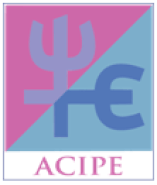
Ana Medina Reguera
Professor of the Dept. of Philology and Translation. Pablo de Olavide University
In times of less technological development, reading and writing practices were restricted to children with typical (grapho)motor development. Thus, manipulative skills such as holding books with the hands, thumb and index finger movements in the form of a pincer, mastering straight and circular strokes, etc., were assumed. Today, however, we know that new forms of access to computers and mobile devices have enabled SAAC users with severe mobility limitations to access literacy. New head and, especially, gaze-controlled mice have increased direct access options that were previously restricted to switches and have been a revolution for children who do not have minimal upper limb control. And, even when mobility limitation is moderate and access is tactile, the fact of writing on a keyboard with the finger and dispensing with the pencil as the only valid writing tool, represents a change of perspective in traditional education. These accesses, well evaluated, together with a proper implementation and training of interlocutors, allow the development of communication, but also of screen reading and writing by means of virtual keyboards. To successfully reach these milestones, emergent reading and writing experiences are encouraged with alternative pencils, scribbling on screen, phonological awareness practice with synthetic voices and other strategies that are not yet properly updated in the daily practices of teachers and therapists.
Ana Medina holds a PhD in Linguistics from the University of Seville, with a thesis on the German writing system (2004). She worked for several years at the University of Cologne (Germany) and joined the Pablo de Olavide University in Seville, where she is currently a full professor in the Department of Philology and Translation and head of the COMINTRAD research group (Hum-995). Her research interests focus on translation for accessibility, specifically on intralinguistic translation for easy reading, on the one hand, and augmentative and alternative communication, on the other. From the first line, the state R+D+I project "Pictographic systems and visual elements to understand heritage. Intersemiotic translation to easy reading (PID2020-118775RB-C22)", of which she is principal investigator. In the field of AAC, she is the director of the project of the Spanish Foundation for Science and Technology of the Ministry of Science and Innovation "Capaces de Comunicar", as well as training and lectures given, especially focused on students with physical disabilities and access by sight.
She has been Vice-Dean in the Faculty of Humanities and responsible for the area of German Philology. She has had postdoctoral stays such as the José Castillejo fellowship in 2010 at Aston University (Birmingham, UK) and has taught and lectured in Leipzig, Munich, Düsseldorf, Graz, among many others. He has supervised five doctoral theses, has three sexenios, one transfer. He has had several transfer contracts, such as the translation of the materials of the degree for students with intellectual disabilities of the UPO FEVIDA, the design of the easy web FEVIDA. His publications and projects can be consulted on the group's website, www.comintrad.es. He has co-founded the non-profit association ALFASAAC, a portal for scientific information and advice in the field of Augmentative and Alternative Communication.





